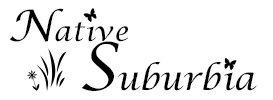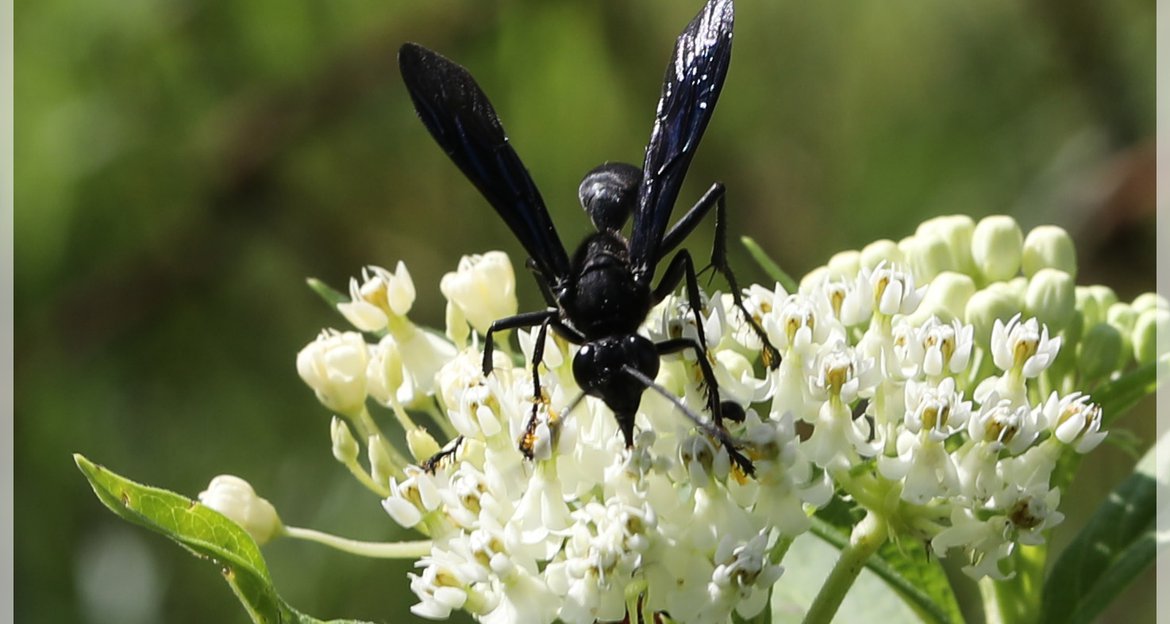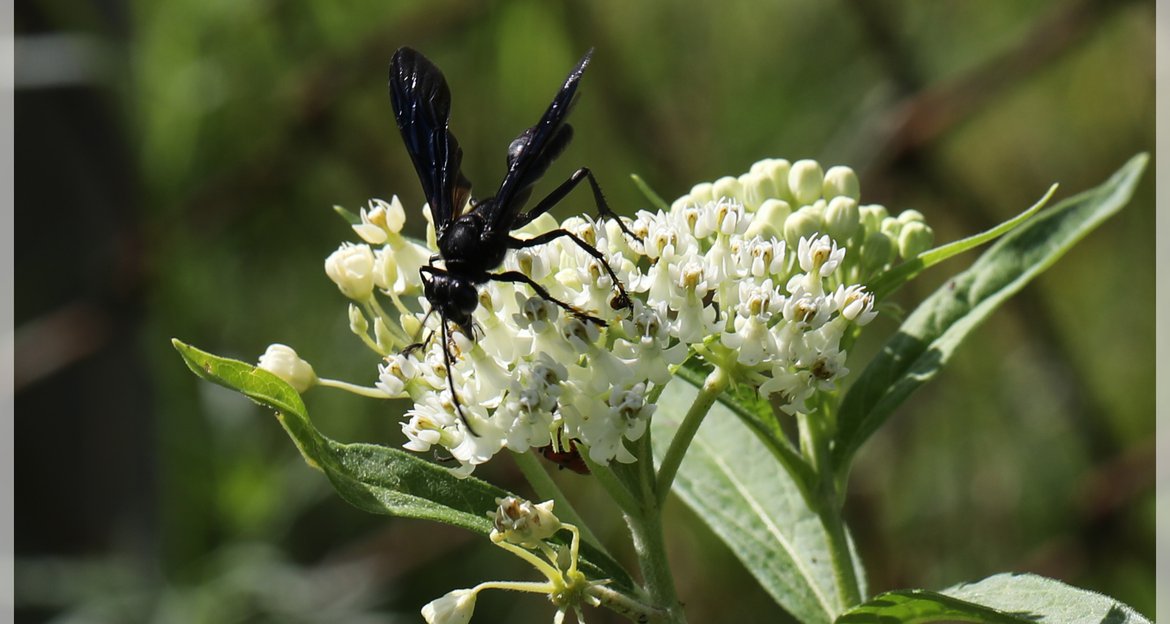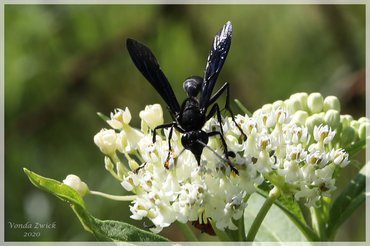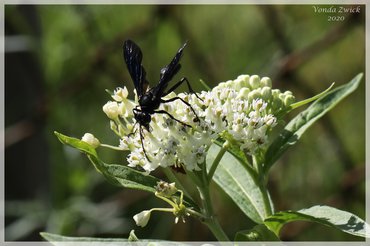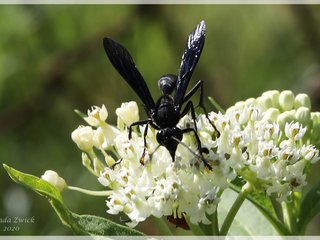Great Black Wasp Identified in Rain Garden
Posted by Vonda on July 20, 2020
The Great Black Wasp has been visiting the gardens every day. Unfortunately, it has been less cooperative about landing and staying put, so I have failed to get a good picture for a positive ID until yesterday. In the late afternoon, I finally caught this very large, very black wasp pausing to pollinate the 'Ice Ballet' cultivar of Swamp Milkweed.
The 'Ice Ballet' cultivar of Swamp Milkweed is very similar to the native except that it produces white flowers. One has to be very careful with cultivars because the changes we make to suit our aesthetics or gardening needs sometimes come at the cost of value to wildlife, including pollinators and insects who use the plant as a host. One also must take care not to plant cultivars in locations where they can easily escape into wild settings and replace the native varieties. However, I have found the 'Ice Ballet' cultivar to be as good a host plant to the monarch caterpillar as the straight native, and pollinators seems to love it equally well (as this lovely wasp can attest to), so I feel comfortable keeping it in my gardens. It propogates easily if allowed to go to seed and you can tell seedlings that will produce white flowers from a very early age because their stems will be all green without even a hint of pink/rose coloring.
The Great Black Wasp is a very large wasp in the digger family. They are solitary wasps. Females lay individual eggs in tunnels, and pack each tunnel with a katydid, cricket, or grasshopper, which will feed the larva when it hatches. Adult wasps are excellent pollinators and are quite busy as they buzz loudly around gardens seeking prey for their young or pollen/nectar for themselves. They are generally considered a beneficial garden insect. Great Black Wasps pose little threat to humans and usually do not sting, but they are capable of it if provoked, so they are best observed without interference.
